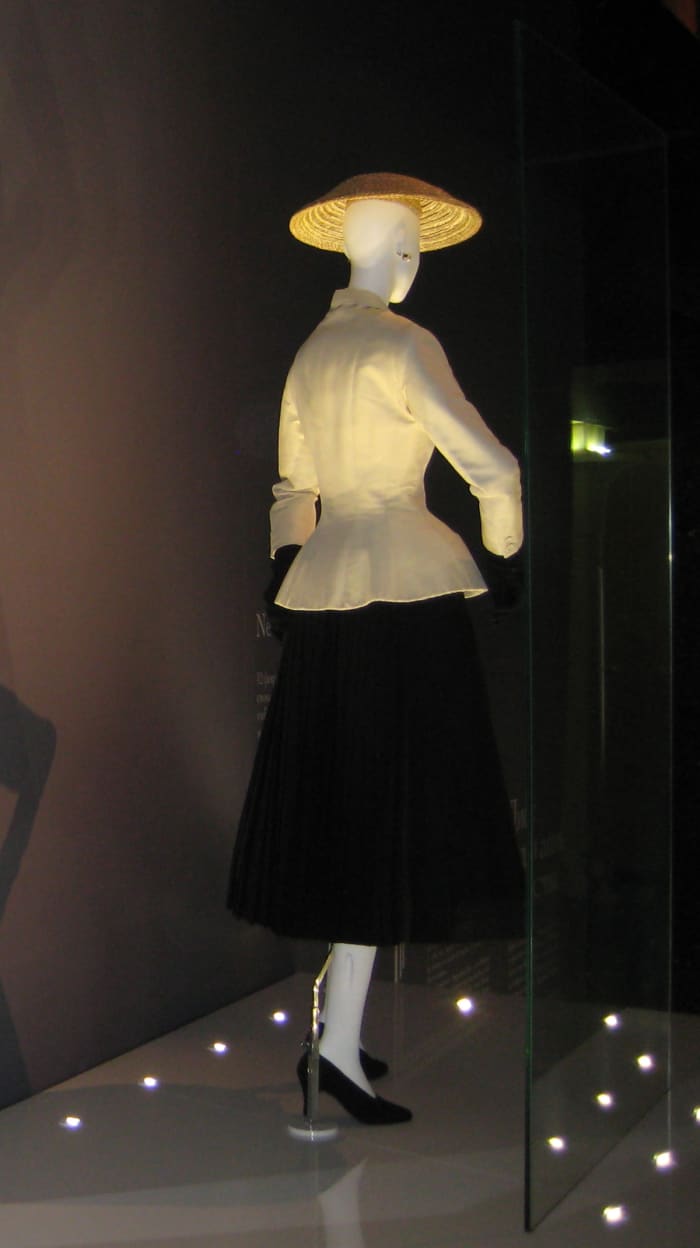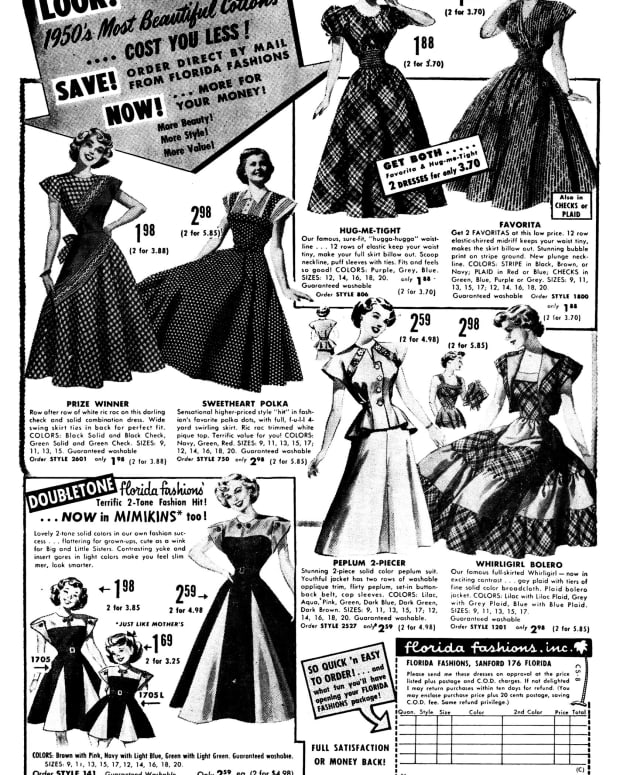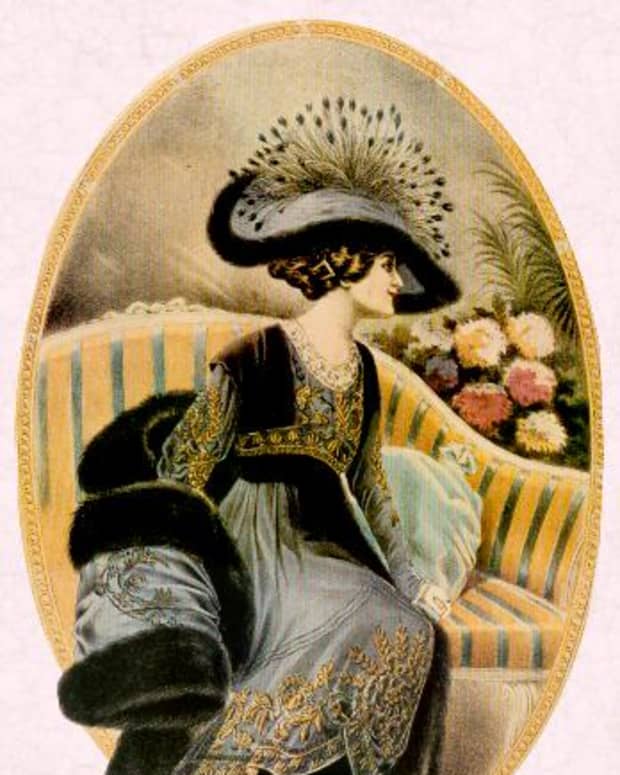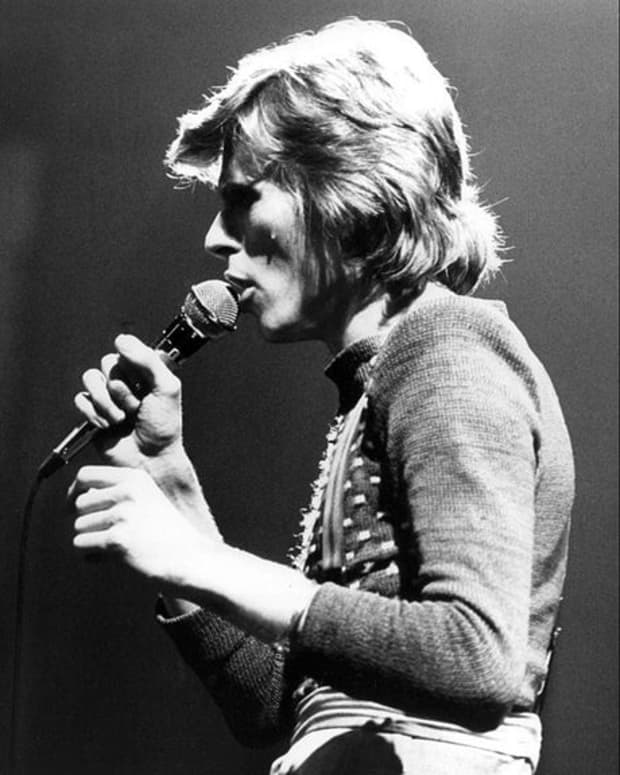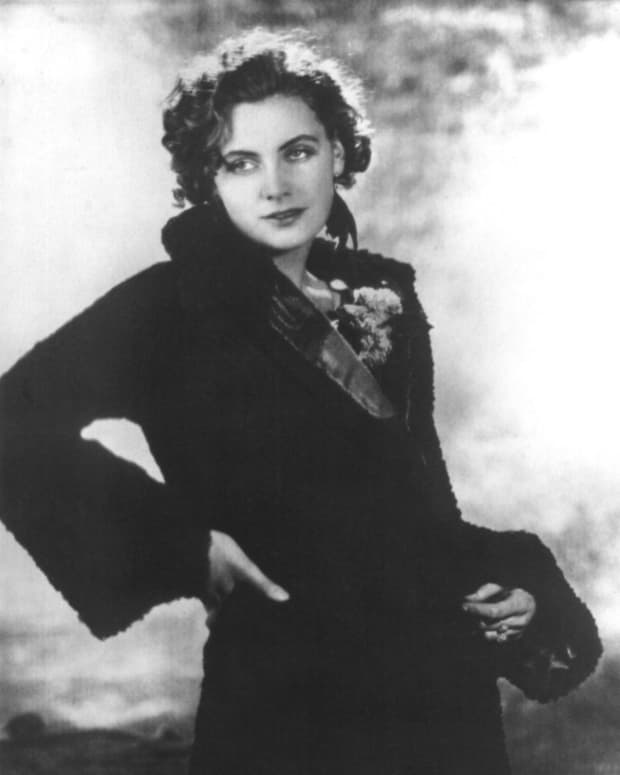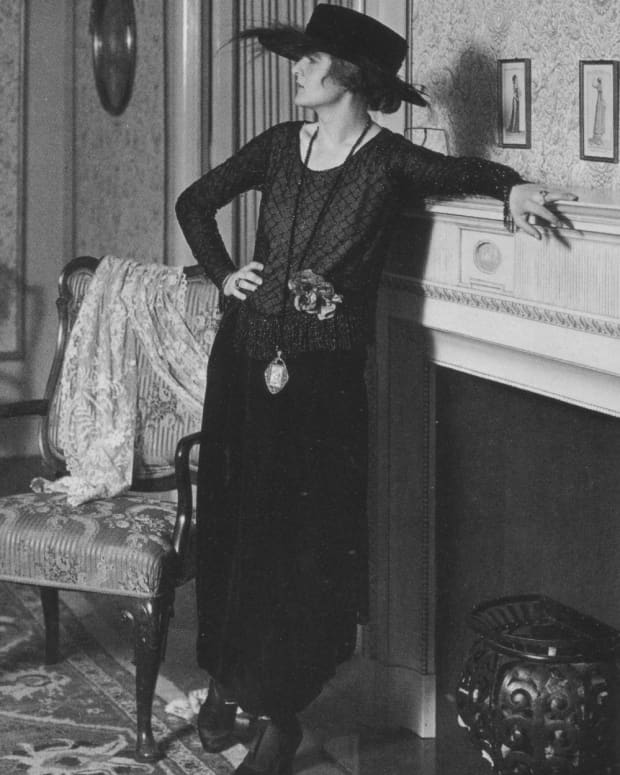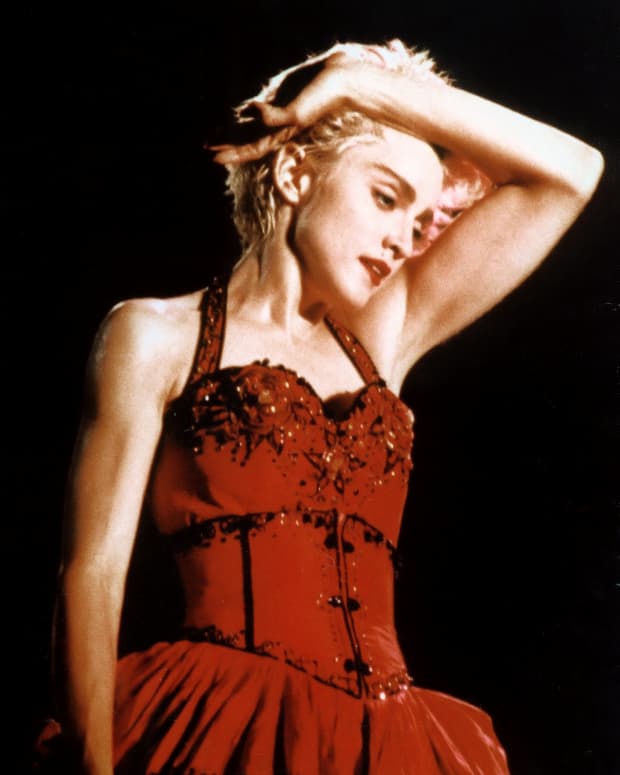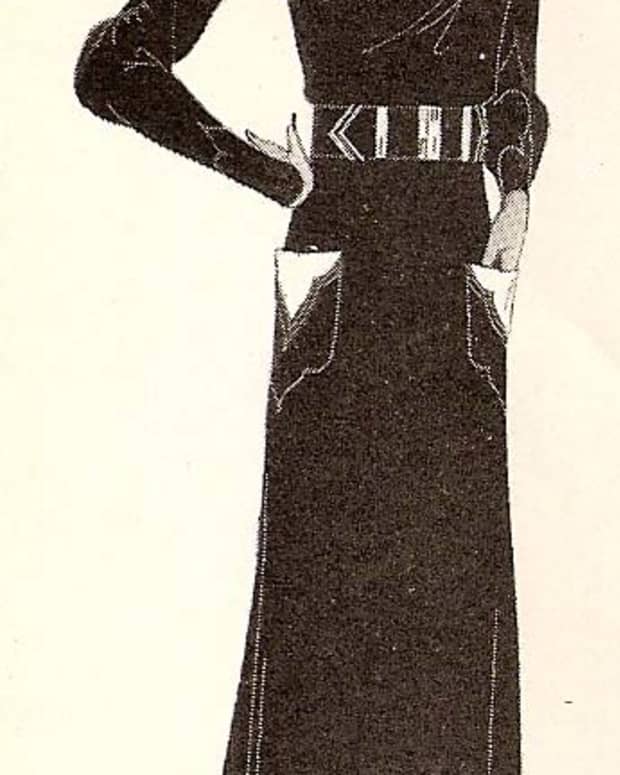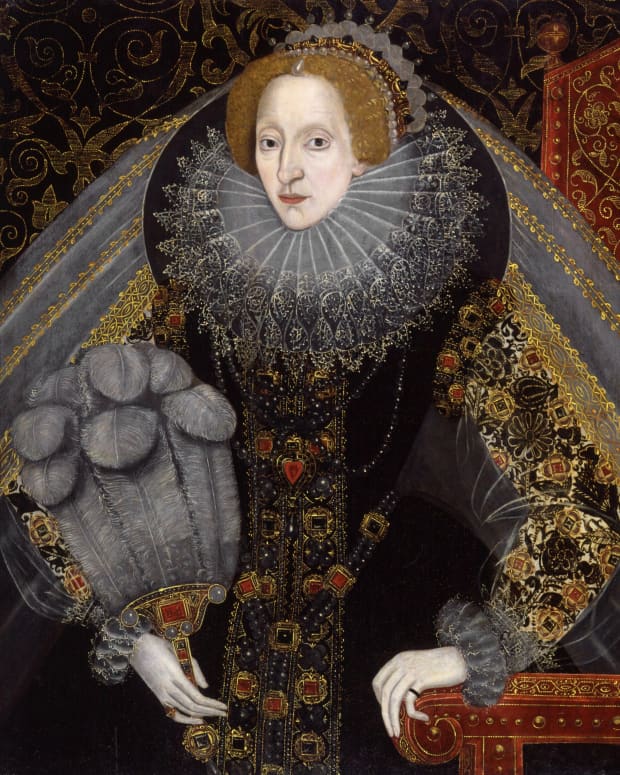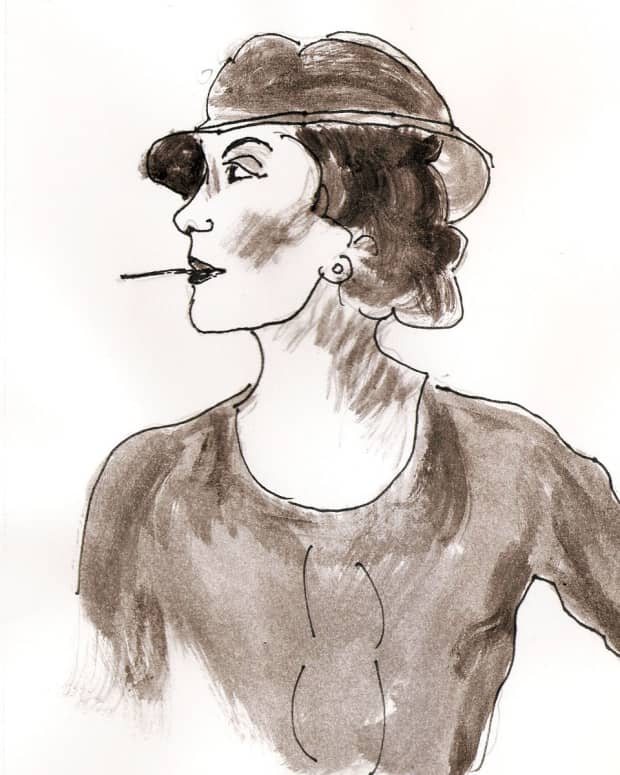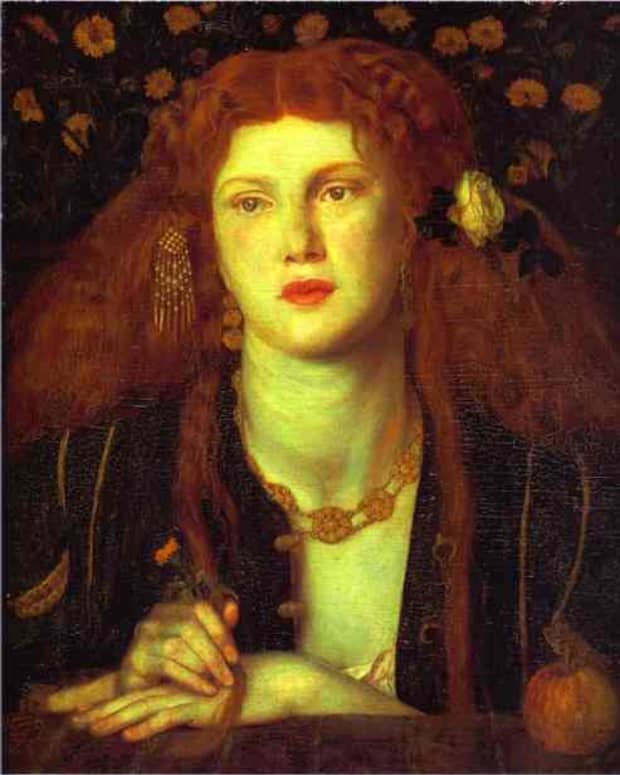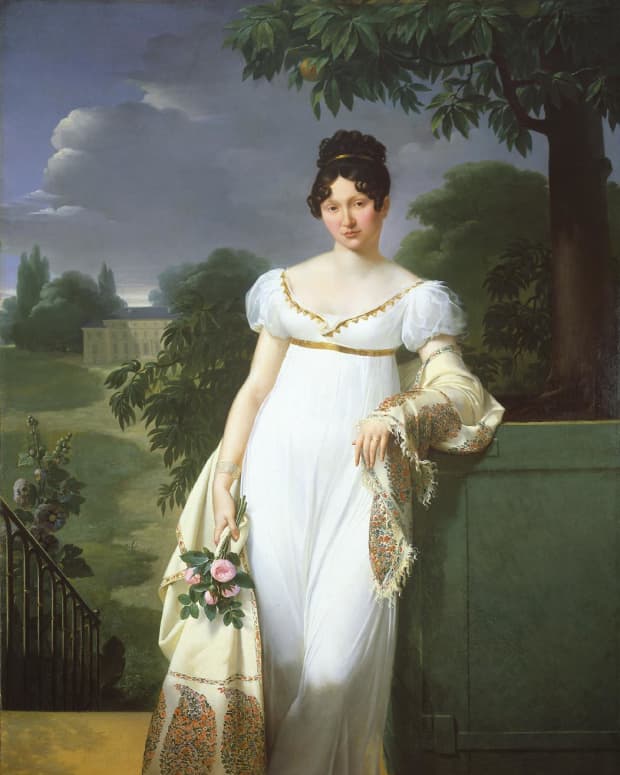Fashion History: The Importance of Christian Dior
Dolores's interest in fashion history dates from her teenage years when vintage apparel was widely available in thrift stores.
In ten short years, Christian Dior revitalized and revolutionized the fashion industry. When he burst on the Paris fashion scene in 1947, his New Look created an international frenzy never seen before or since. At age 41, the new designer created a dominant new silhouette based on a femininity that combined historic concepts and brought a war-ravaged world into a new age of glamour and luxury.
A few weeks after his debut collection, everyone knew Christian Dior, his look, and his styles. His strategy and innovation, his press-savvy, and his seasonal changes recreated the way women viewed the world of fashion. His marketing concepts revitalized the fashion industry. By 1950, Maison Christian Dior earned over half the total profits of the Parisian couture industry.

1943: The simple dresses of wartime featured short hemlines. There is a barrage balloon in the background.
Ministry of Information 2nd World War Official Collection, Britian; wikimedia commons; Public Domain
Post-World War II Fashion Before Dior
In 1947, Europe was still recovering from a war that ended in 1945. France had been occupied by Nazi Germany for five years. The horror and humiliation of seeing an invading force enter Paris ran deep. The scarcity of heating fuel and food made daily life difficult at best.
The rationing of materials all but destroyed the fashion industry. Haute couture became meaningless against the deprivations wrought by war. Couture houses closed. Designers like Shiaparelli and Mainbocher fled to New York.
The style of women's clothing had adjusted to rationing and restrictions. During World War II, skirt hems rose to save on fabric. Dresses and jackets took on a boxy, military look. Women wore pants for work and to move more easily on bicycles.
Despite the war's end, the mood was bleak and recovery was hard. It must be remembered that World War II marched in on the heels of the Great Depression.
Enter Dior
But on the morning of February 12, 1947, Christian Dior, a new kid on the block, offered something totally new: grand designs featuring glorious skirts, tiny waists, and a female figure that had not been seen for 100 years.
Christian Dior's Background
Christian Dior was born in 1905 in Granville, Normandy, in a home flanked by trees with a view of the English Channel. His father owned a successful fertilizer business. Young Christian was a quiet boy who loved nature. The Dior family moved to Paris during the last years of the Bell Epoque. Also called the Gilded Age, it was a time of great interest in the arts—a time of optimism and prosperity.
Education and Art
Christian attended the University of Sciences Politique in order to fulfill his father's political ambitions. But the young man was soon drawn into a bohemian lifestyle, attracted to the arts and the avante guarde. Financial backing by his father allowed Christian to open an art gallery. When the Great Depression ruined the economy Christian was forced to close the gallery and sell the artwork at a loss. A broke and essentially homeless Dior (the loss of his apartment made him dependent on friends) contracted tuberculosis, a life threatening disease that put him in a sanatorium for a year.
At the suggestion of a friend, Christian took up drawing and eventually sold sketches to magazines and couture houses. His artwork interested Robert Piguet, a Swiss fashion designer at the couture house of Lucien Lelong. Dior had found his calling, working in the fashion industry.
Wartime Years
But the war and the invasion of France put his career on hold. After being mobilized for a short time for land work in the south of France, Dior returned to Paris and to the diminished fashion industry. Apparently, Dior passed information gleaned from the wives of Nazi bigwigs to his sister who was in the resistance. His sister was captured and hauled off to Ravensbruck. Dior used his position to help in her release. He later honored her by naming a perfume Miss Dior.
Financial Backing From Boussac
Shortly after World War II, Dior leaned that the famous textile designer Marcel Boussac wanted to revitalize the House of Philippe de Gaston. In an April 1946 meeting with Boussac, Dior described the public's need for a new post war style. He wanted to return to the luxury of the Belle Epoque but with designs based on a new simplicity created by exquisite craft. Impressed, Boussac provided the financial backing for Dior to open his own design firm.
The New Look Takes the World by Storm
On the morning of February 12, 1947, Maison Christian Dior introduced his Corelle collection to a war-weary society. Dulled by years of austerity, people hungered for something new and fresh.
When the much publicized show opened at 10:30 AM to a packed house, a collective gasp met models clad in unprecedented swaths of fabric. A society used to simple boxy shapes, short skirts, and a military look gobbled up the extravagant sweep of Dior's Corelle line.
Features of the Look
In a time when hemlines brushed just below the knee, Dior's skirts fell to 14 inches above the floor. Following a time when the government restricted the amount of fabric used to produce garments, Dior's full skirts were reminiscent of mid 19th century crinolines. Tiny, corset cinched waistlines, full busts, padded hips, and soft shoulder lines created a revolutionary new female form.
Reception
The show closed to a standing ovation. Doir's designs made the cover of Life Magazine. Press releases turned him into an instant celebrity. Princesses and movie stars snatched up dresses in a frenzy of unfettered hedonism. For a society starved of snazz, the Corelle line was a romantic change of perspective, introducing a fashion renaissance. Within hours, the contents of women's wardrobes became obsolete.
Read More From Bellatory
Carmell Snow, the editor-in-chief of Harper's Bazaar exclaimed that Dior offered fashion with a "new look." The phrase, picked up by Reuters, christened the legendary new line.
Not Everyone Approves
Not everyone appreciated the bold new style. Critics objected to the extravagant use of materials in a time of coal shortages. The high cost of haute couture seemed decadent when Parisians stood in bread lines.
Women who had gained a measure of independence during the war years looked on the antebellum silhouette as frivolous. Women used to wearing trousers objected to whalebone corsets and layers of tulle slips or crinolines to maintain an hourglass figure.
But the New Look was everywhere, from haute couture to the swing skirts paired with bobby socks and saddle oxfords worn by American teenagers. He designed the costumes worn by Marlene Dietrich in the movie Stage Fright. The famous Hollywood costume designer Edith Head based her creations for Grace Kelly in the film Rear Window the new style.


Dior Changes the Fashion Industry
Before Dior, a couturier gradually introduced new fashion trends. New collections were slightly different each season with designs based on the look of the previous season. The sudden, sweeping changes embraced by Maison Christian Dior was unprecedented. He became the darling of the press and an international celebrity. Critics thought him a fame seeker and publicity hound, addicted to drama and attention.
Expansion
In 1948, Christian Dior New York brought his products to the ready-to-wear market using fabrics that worked well for machine production and incorporated America's taste for more casual styles.
Wholesale fashion companies were able to purchase Dior designs and produce them for the mass market. Dior also received royalties for each garment. In 1950, Dior earned half the profits of the entire Parisian couture industry. By 1957, Maison Christian Dior offered licensing in 87 countries that offered Dior's label on stockings, handbags, make-up, and perfumes.
Dior's Later Designs
Each new collection was named for an overall theme. Lines like "Evol" and "ZigZag" featured asymmetrical hemlines and bustles.
- 1950s "Oblique" and "Vertical" lines showed narrow skirts that fell to mid calf and featured a looser bodice with big sleeves.
- 1951s "Long" line offered a Princess look whose long lines featured high waists and spencer jackets. "Oval" highlighted oval necklines, oval sleeves, and rounded hips.
- 1952 introduced the "Sinuous" and "Profile" lines which included shirtwaists and cocktail outfits. Pleated crepe dresses were shown with matching cardigans in sugar almond colors.
- 1953"s "Tulip" took inspiration from the natural world with large floral prints and a higher hemline.
- 1954 and 55's "H" line and 1955's "A" and "Y" lines used letters of the alphabet to describe garment shapes. The "Y' line accentuated broad shoulders and bust that tapered to a narrow skirt. High standing collars completed the look.
- The "Arrow" line of 1956 featured high waistlines worn with belts and short swing jackets.
- Dior's last collection, the "Spindle" line surprised all with a loose fit showing no waistline with a relaxed and casual elegance. Called the sack dress by many, the look was continued the following year after his death.
The Legend Lives On
Despite his influence, Christian Dior ran his couture house for a mere 10 years. On October 29, 1957, Dior suffered a fatal heart attack at an Italian resort. The windows of Maison Christian Dior were festooned in black and nearly buried under mountains of flowers left by mourners. In Dior's honor, floral tributes were laid along the route to the Arc de Triomphe.
The man may have died, taken too soon, but Maison Christian Dior lives on as does his legend. The administration of Maison Christian Dior passed into the hands of Yves Saint Laurent.
Comments
Ann Carr from SW England on October 03, 2019:
Yes! What goes around comes around, though usually with a twist. Fashion says so much about society.
Ann
Dolores Monet (author) from East Coast, United States on October 02, 2019:
Hi Ann - glad you enjoyed! I find it so interesting how after the time of great frugality, Dior went whole hog on the New Look. While it seemed wonderful I get how some people were upset as rationing and frugality were still in place. But the historic look of those tiny waists and wide skirts so remind me of the mid 1800s!
Ann Carr from SW England on October 02, 2019:
Beauty, elegance and simplicity - a great combination! I loved the look and it's wonderful that we still see it everywhere in clothes and perfume.
Interesting history and details, Dolores. You always create an informative fashion article. Thanks for the education as well as the glimpses of those wonderful clothes. Your passion for 'couture' shines through!
Ann
Dolores Monet (author) from East Coast, United States on October 01, 2019:
Hi Josephine - you can find vintage Dior garments as well as many other vintage designer brands online at several sites including eBay and etsy. In my own city (and hopefully in your area) some boutiques specialize in vintage items.
Josephine Elias on September 27, 2019:
Hi where in the US could find the Christian Dior cloths of old time
thank you

